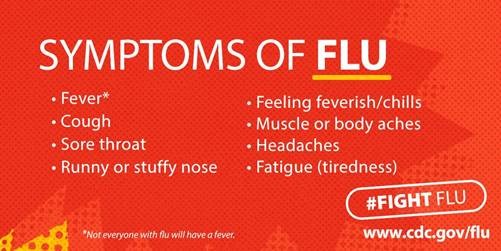What to Do When You Have the Flu

Chills, body aches, fever, runny nose, cough, and vomiting in combination with one another may signal that you have become the flu’s latest target. Although sanitizing surfaces, washing your hands often and taking your vitamins are all ways to prevent illness, the flu virus may prove stronger than your efforts to stay healthy. With 46 flu related deaths this season in Washington (Washington State Department of Health), the only logical choice is to stay home and prevent exposing everyone in your office if you become ill.
Before you leave for work each morning, assess your health based on the following graphic. If you are experiencing any of these symptoms, follow the steps below to limit your teammates’ chances of getting sick, prevent falling drastically behind on your work, and ensure that you return to work as soon, and as healthy, as possible.

- Call your team: Immediately alert your team that you are sick so that they can do two things. One, go through the entire office and disinfect anything that you touched, or may have possibly breathed on. But seriously, it is in their best interest to take precautions i.e. sanitizing surfaces that you may have come in contact with. Two, game plan how projects and tasks that you would typically be responsible for are going to be completed while you are out of the office.
- Stay home: If you are experiencing flu symptoms, the CDC recommends that you stay home for at least 24 hours after your fever has broken (without help from Tylenol or other fever reducing drugs). No matter how anxious you are to get back to work, coming back before you have met this requirement may prolong your symptoms or cause someone else to become ill.
- Take care of yourself: While you are at home, do whatever it takes to get healthy. Rest, drink plenty of water, go to a doctor who can prescribe antiviral medication if needed. I knew someone who swore that watching the Lord of the Rings trilogy would cure any cold or flu. I’m not sure if science was on his side, but if you find something that expedites your recovery, do it.
- Ease back into work: Once your major symptoms have subsided, check in with your team and figure out what you can work on at home. Staying aware of what is going on at work and accomplishing tasks at home will help to ease your anxiety about the amount of work will be on your desk as soon as you return.
Remember that even though employers are expecting an influx of sick days this time of year, you should not take advantage unless you are truly sick. The last thing your employer and team members need to worry about is if you are faking an illness.

